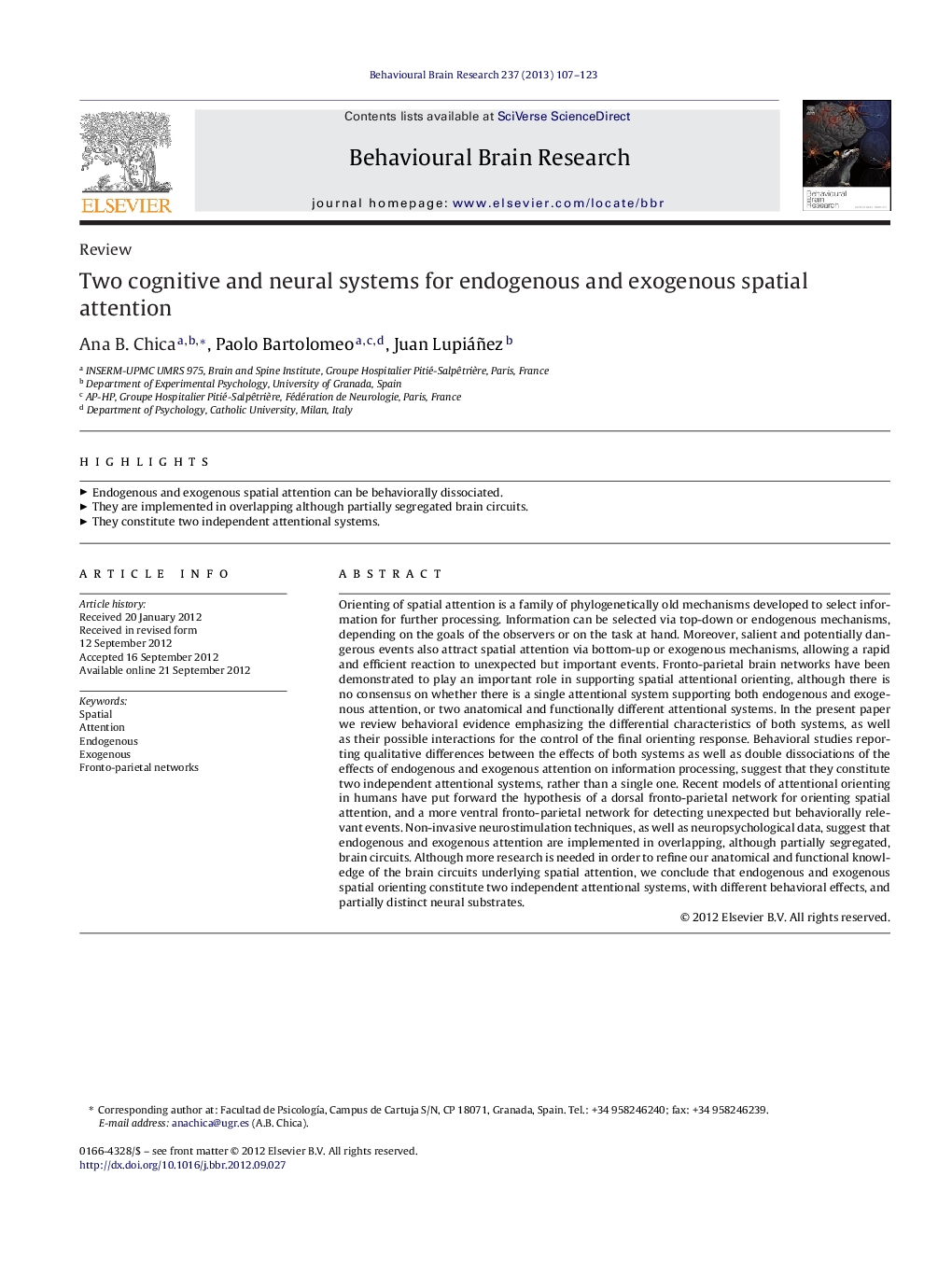| کد مقاله | کد نشریه | سال انتشار | مقاله انگلیسی | نسخه تمام متن |
|---|---|---|---|---|
| 6259300 | 1612995 | 2013 | 17 صفحه PDF | دانلود رایگان |
Orienting of spatial attention is a family of phylogenetically old mechanisms developed to select information for further processing. Information can be selected via top-down or endogenous mechanisms, depending on the goals of the observers or on the task at hand. Moreover, salient and potentially dangerous events also attract spatial attention via bottom-up or exogenous mechanisms, allowing a rapid and efficient reaction to unexpected but important events. Fronto-parietal brain networks have been demonstrated to play an important role in supporting spatial attentional orienting, although there is no consensus on whether there is a single attentional system supporting both endogenous and exogenous attention, or two anatomical and functionally different attentional systems. In the present paper we review behavioral evidence emphasizing the differential characteristics of both systems, as well as their possible interactions for the control of the final orienting response. Behavioral studies reporting qualitative differences between the effects of both systems as well as double dissociations of the effects of endogenous and exogenous attention on information processing, suggest that they constitute two independent attentional systems, rather than a single one. Recent models of attentional orienting in humans have put forward the hypothesis of a dorsal fronto-parietal network for orienting spatial attention, and a more ventral fronto-parietal network for detecting unexpected but behaviorally relevant events. Non-invasive neurostimulation techniques, as well as neuropsychological data, suggest that endogenous and exogenous attention are implemented in overlapping, although partially segregated, brain circuits. Although more research is needed in order to refine our anatomical and functional knowledge of the brain circuits underlying spatial attention, we conclude that endogenous and exogenous spatial orienting constitute two independent attentional systems, with different behavioral effects, and partially distinct neural substrates.
⺠Endogenous and exogenous spatial attention can be behaviorally dissociated. ⺠They are implemented in overlapping although partially segregated brain circuits. ⺠They constitute two independent attentional systems.
Journal: Behavioural Brain Research - Volume 237, 15 January 2013, Pages 107-123
